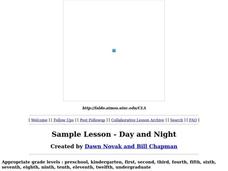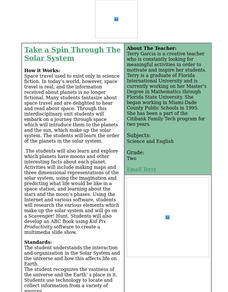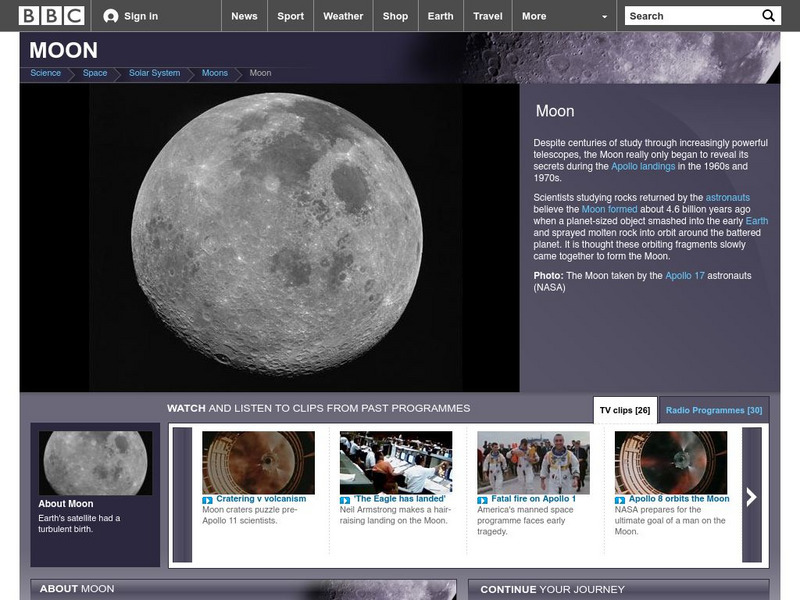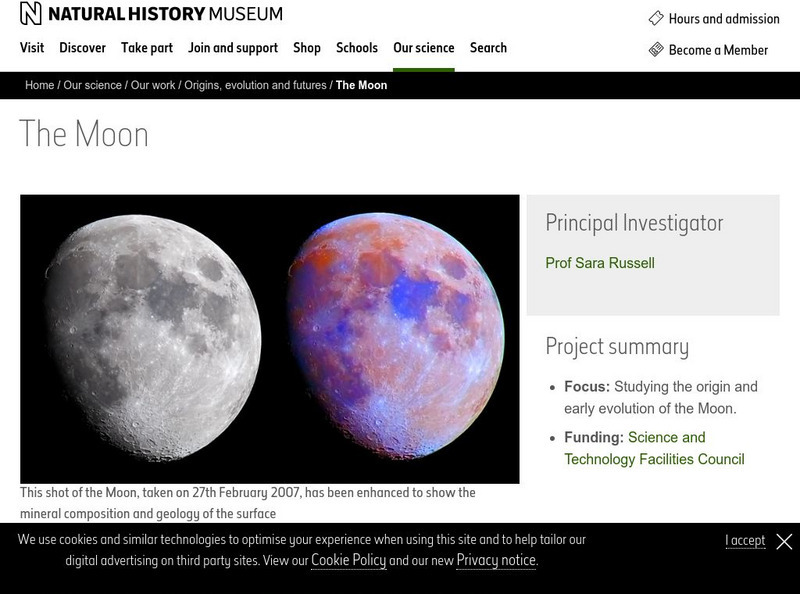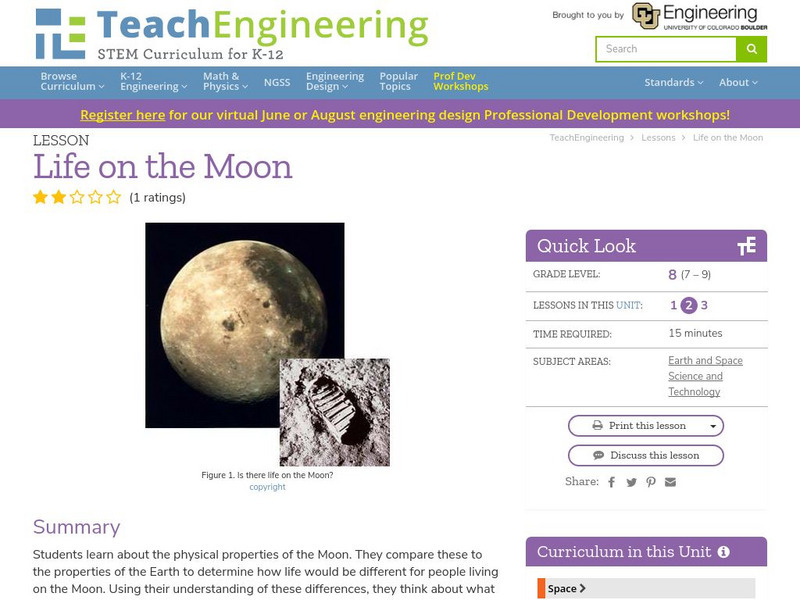Curated OER
Day and Night
Learners discuss why day and night occur after visualizing a teacher-led demonstration.
Curated OER
Space: The Final Frontier
Sixth graders construct a graph to demonstration information that they've learned about the solary system. They also write or illustrate a sonar or lunar eclipse.
Curated OER
Moon Lesson Plan # 3
Students learn phases of the moon by sight identification. Names of eight phases are placed on eight and students draw the eight phases of the moon on the remaining cards. They are now ready to play concentration to learn the phases of...
Curated OER
The Differences Between the Earth and the Moon
Fifth graders identify the physical characteristics of the Earth and compare them to the physical characteristics of the moon. They produce a chart with Microsoft Excel to record the physical characteristics of both the Earth and the moon.
Curated OER
3rd Rock from the Sun's Baby Rock
Seventh graders have a chance to actively see each phase of the moon and make connections to what they see in the sky when you show how the moon goes through each of the phases.
Curated OER
How Distant Is The Moon?
Students discover how Aristarchus, a Greek astronomer around 230 BC, used a simple observation of the eclipse of the Moon, plus clever reasoning, to deduce the distance of the Moon. They practice the same calculation technique.
Curated OER
Take a Spin Through the Solar System
Second graders participate in a variety of activities to explore the Solar System in this unit.
Curated OER
Lunar Life Support
Students design and build models of nine life support systems which are crucial to our successful settlement of the Moon. Each team must define the requirements of their system, exploring how these requirements are currently being met on...
Curated OER
Bouncing Sunlight
Third graders use flashlights and balls to demonstrate how the light bounces off of the sun and reflects onto the moon. They record their observations in a journal.
California Institute of Technology
Cool Cosmos: Ask an Astronomer for Kids
Cool Cosmos, a NASA-affiliated site, has compiled a list of frequently asked questions about the moon and linked them to answers provided by actual astronomers! Click back to the Cool Cosmos home to access the Spanish-language version.
BBC
Bbc Science and Nature: The Moon
The BBC brings together a lot of useful information about the moon and related topics, such as the lunar landings, and publishes it in the form of a traveler's guide.
Seeker
Seeker: Week of 8 11 14: The Supermoon as Seen Around the World
View images of the recent supermoon phenonemon.
Google
Google: Moon
An exciting new way to explore the Apollo moon missions, visit the moon on this interactive map and take a tour of each Apollo landing.
NASA
Nasa: 21rd Century Explorer: Why Return to the Moon Before Going to Mars?
This short article elaborates on why it's important to have more space missions to the moon before sending a manned space mission to Mars. Follow links to learn more about NASA's other space missions.
Other
Lunar and Planetary Institute: Ranger Photographs of the Moon
Lunar atlas containing selected Ranger mission photographs and documentation.
Other
Lpi: Digital Lunar Orbiter Photographic Atlas of the Moon
The Lunar Orbiter Photographic Atlas of the Moon was originally assembled in 1971 and was the first of its kind to visually present a complete atlas of the surface of the moon. This is the digital version of that atlas.
Science Buddies
Science Buddies: The Moon and the Stars
When you are in the city, only a few of the brightest stars are visible. But when you are in the country, you can see many more stars than you can count. Sometimes you can even see the bright belt of our galaxy, the Milky Way. In this...
Georgia Department of Education
Ga Virtual Learning: The Moon
In this interactive tutorial students will explore what it is like on the Moon. Learn why the shape of the Moon seem to change and also about lunar eclipses. Discover why the tide changes twice a day and explore how the cycle of the Moon...
NASA
Nasa: The Space Place: Build a Moon Habitat
Let's go to the Moon! An activity engaging students in creating a moon habitat out of newspaper.
NASA
Nasa: Space Place: How Far Away Is the Moon
Often when we see drawings of the Earth and the moon, they look really close together. Check out this cartoon series that helps illustrate the reality of this concept.
Natural History Museum
Natural History Museum: The Moon
A study of the moon that centers on its origin, its structure, and its behavior.
DOGO Media
Dogo News: September Ends With Rare Black Moon
We've seen a full moon, a half moon, a blue moon, but how often do we get to see a black moon? Find out what a black moon is, why it is so rare, and what it looks like.
TeachEngineering
Teach Engineering: Life on the Moon
Students learn about the physical properties of the Moon. They compare these to the properties of the Earth to determine how life would be different for people living on the Moon. Using their understanding of these differences, they...
NASA
Nasa: Exploration: Then and Now: Settlement Lesson
This lesson has young scholars examine different land to determine whether settlement is affected by an area's location, soil, and weather.


